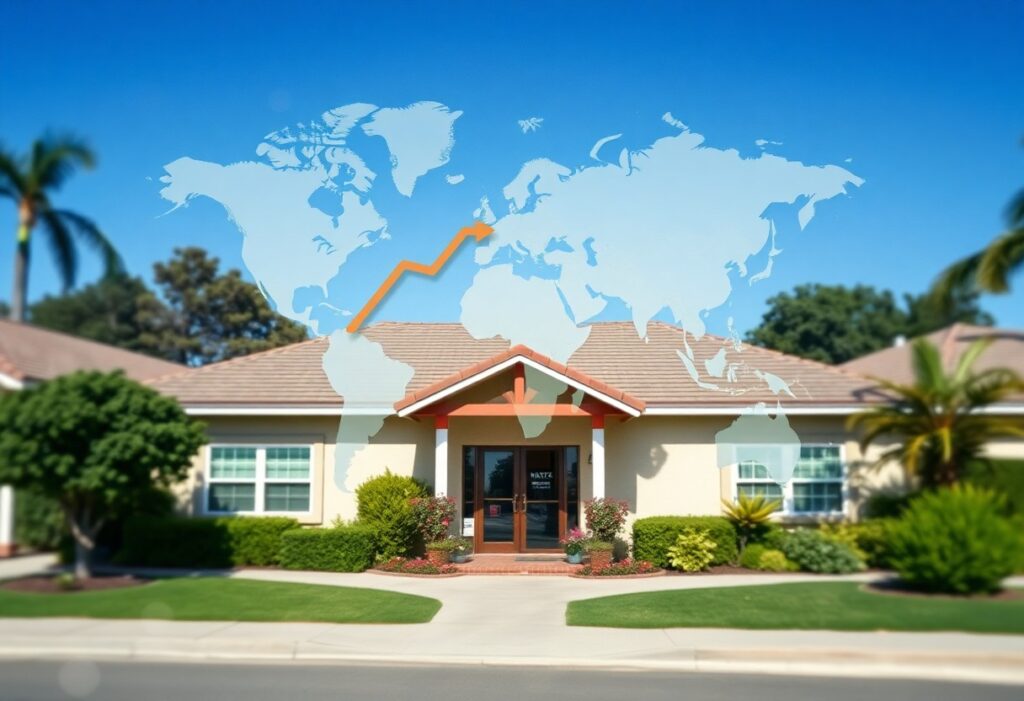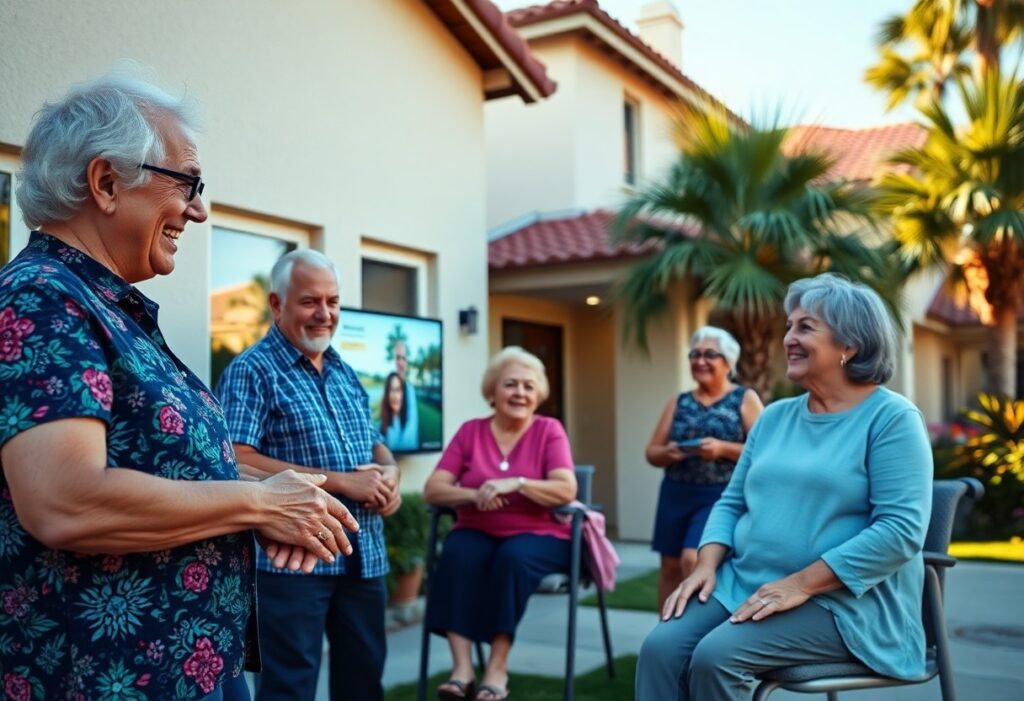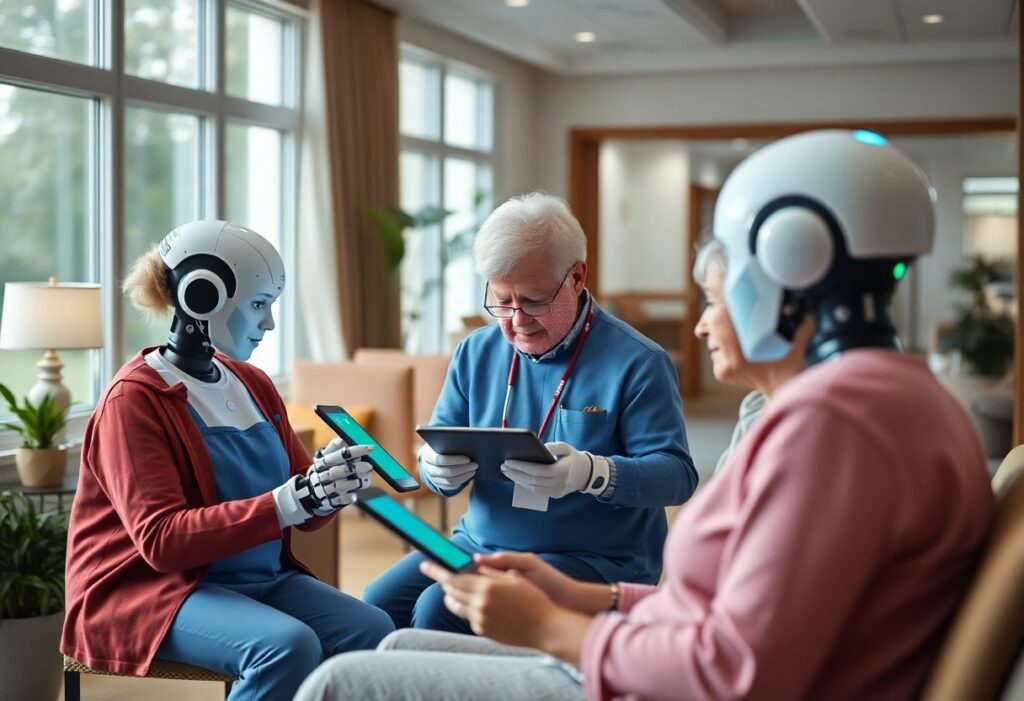Many facility owners are recognizing that technology trends are not just optional enhancements but crucial strategies for improving senior care. As the population ages and demands change, you need to stay ahead of the curve by adopting innovations that enhance care quality, streamline operations, and promote staff efficiency. This blog post will guide you through the latest technological advancements, helping you make informed decisions that directly impact your facility’s success and the well-being of your residents.
Key Takeaways:
- Emphasizing the integration of telehealth and remote monitoring technologies can enhance patient engagement and streamline healthcare delivery in senior care facilities.
- Utilizing data analytics and AI-driven tools aids in improving operational efficiency and personalized care by predicting health outcomes and optimizing resource allocation.
- Adopting user-friendly communication platforms fosters better connections between staff, residents, and families, ultimately enhancing the overall satisfaction and quality of care.

Understanding Technology Trends
While the landscape of senior care is rapidly evolving, it’s crucial for facility owners like you to stay informed about the technology trends that are redefining how care is delivered. These innovations not only enhance the quality of care you provide but also streamline operations within your facility. The integration of advanced technologies such as telehealth, artificial intelligence, and wearable health devices is no longer just a possibility; it’s becoming a necessity in meeting the diverse needs of your elderly residents. Embracing these changes can significantly improve the efficiency of your facility while enhancing the overall resident experience.
Key Innovations in Senior Care
Senior care providers are increasingly utilizing technology to support independent living and improve patient outcomes. Telehealth services allow for real-time consultations between patients and healthcare professionals, ensuring that your residents have timely access to medical advice without the need for physical travel. Additionally, wearable devices can monitor vital signs and alert caregivers to potential health issues before they escalate, enabling proactive interventions that contribute to better health management.
Benefits of Technology Adoption
Any technology you adopt in your facility holds the potential to streamline processes and elevate care standards. Enhanced data collection methods through electronic health records can lead to *more informed decision-making* and optimized care plans tailored to the individual needs of residents. Furthermore, implementing automation in routine tasks, such as medication management and scheduling, can reduce staff workload, allowing your team to focus more on personal interactions with residents, which in turn fosters a warm and engaging environment.
Understanding the benefits of technology adoption can transform your facility by improving operational efficiency and resident satisfaction simultaneously. By investing in these innovations, you can identify opportunities for growth and elevate the quality of care that residents receive. Ultimately, the positive impact of cutting-edge technologies not only supports your facility’s reputation but also the overall well-being of the seniors in your care.
How-to Evaluate Technology Solutions
Assessing Your Facility’s Needs
Facilities looking to implement new technology solutions must start with a comprehensive understanding of your specific needs and challenges. Evaluating the services and care provided in your facility can unearth areas that could greatly benefit from technological enhancements. Are you facing issues with resident safety, communication, or staff efficiency? By identifying these pain points, you can align your technology investments with the most pressing requirements of your facility, ensuring an optimal return on investment.
To effectively assess your needs, consider involving staff members who interact with the processes daily. Their insights can help you pinpoint areas where automation, connectivity, or data management could improve workflows or resident experiences. Additionally, evaluating feedback from residents and their families can provide valuable perspectives on the potential impact of new technology solutions.
Identifying Reliable Vendors
Some vendors may offer technology solutions that seem promising, but identifying those who are genuinely reliable requires a thorough vetting process. Begin by researching vendors that specialize in senior care technology, and check their track record for delivering quality, support, and ongoing service. You want to look for companies that not only provide innovative solutions but also demonstrate a commitment to understanding your unique operational needs.
It is beneficial to review the experiences of other facilities that have implemented the vendor’s solutions. Seek testimonials, case studies, and online reviews that highlight their ability to deliver on promises and provide effective support. Furthermore, ensure that the vendor offers comprehensive training and post-implementation support to help your staff adapt to the new technology, as this can significantly affect your facility’s overall success with the solution. By carefully evaluating your options and focusing on reliability, you can select a partner that contributes positively to your mission of delivering quality care.
Tips for Implementing New Technologies
Once again, deploying new technologies in senior care requires a strategic approach to ensure success and long-term benefits. To effectively integrate these innovations, consider the following tips to streamline the process and enhance your facility’s operations:
- Assess your needs – Identify the specific challenges and areas where technology can create the most impact.
- Choose the right solutions – Select technologies that align with your goals and the preferences of both staff and residents.
- Involve your team – Engage staff in discussions about potential technologies and train them on implementation.
- Monitor and evaluate – Regularly assess the effectiveness of new technologies and make necessary adjustments.
Assume that by following these guidelines, you will be better prepared to adapt to the evolving landscape of the senior care industry and leverage technology to enhance operational efficiency.
Staff Training and Engagement
Assuming that you recognize the importance of well-trained staff, implementing new technologies requires comprehensive training sessions that empower your team to utilize these tools effectively. Make sure to tailor training programs that cater to different learning styles, ensuring that all employees feel comfortable and confident when using the new systems. This not only enhances productivity but also fosters a culture of engagement and adaptation among your staff.
Encouraging open communication about the technologies can further increase engagement. Solicit feedback from your team about their experiences with the tools, which can provide invaluable insights for future upgrades and enhancements. By actively involving staff in the implementation process, you create a sense of ownership and improve workplace morale.
Ensuring Resident Satisfaction
An crucial aspect of adopting new technologies is the impact they have on resident satisfaction. You must ensure that any innovations introduced to your facility enhance the quality of care and overall experience for your residents. Engaging residents in the process can provide you with critical insights into their preferences and expectations. This may include conducting surveys or holding focus groups to gather feedback on their experiences with technology-driven care solutions.
The integration of modern technologies like telehealth services and digital engagement platforms can significantly improve the way your residents connect with caregivers and loved ones. By prioritizing user-friendly interfaces and personalized care options, you can mitigate the risks of frustration among residents and promote a positive atmosphere. Not only does this lead to improved well-being for your residents, but it also enhances your facility’s reputation as a forward-thinking provider of senior care. Ultimately, a focus on resident satisfaction can translate into better retention rates and higher levels of trust in your care services.
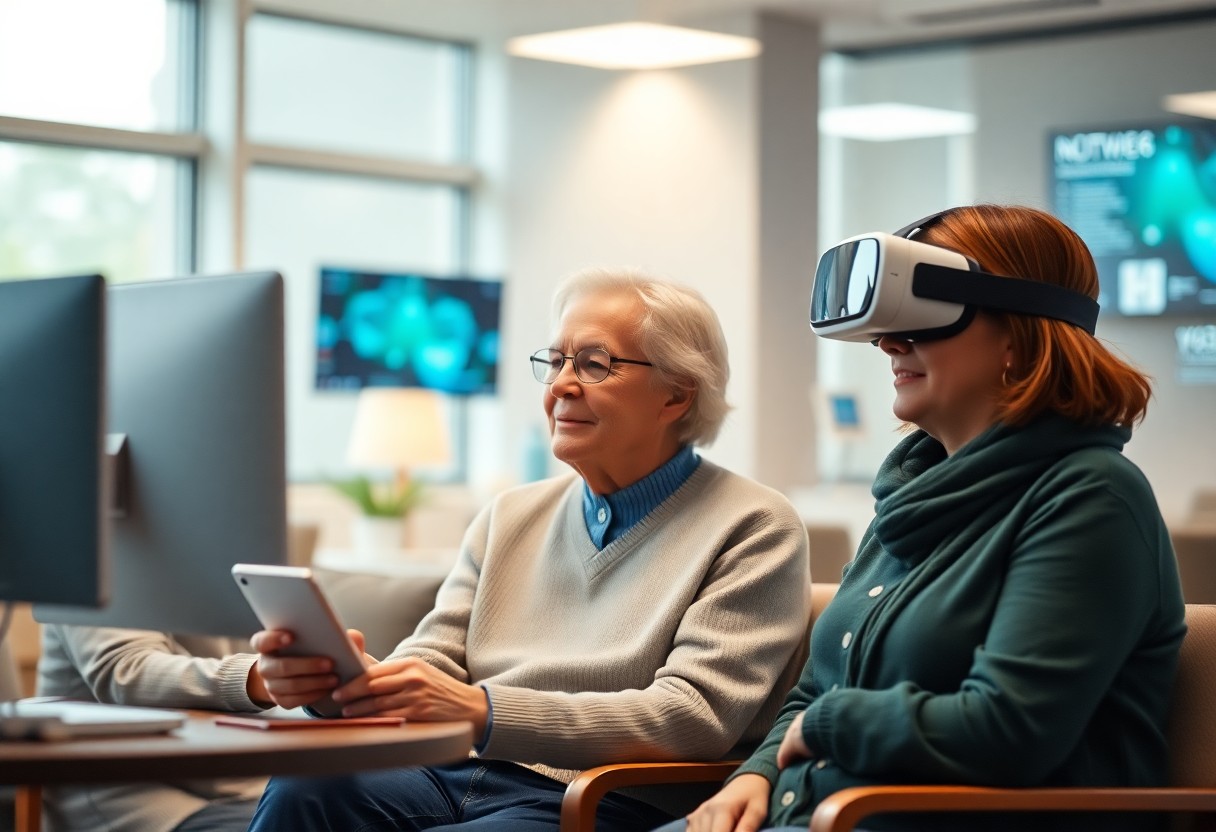
Factors Affecting Technology Integration
To successfully integrate technology in senior care facilities, several factors come into play. You’ll need to consider aspects such as staff training, existing infrastructure, and the specific needs of your residents. Key elements include:
- Staff readiness — Are your employees comfortable using new technology?
- Budget allocation — Do you have the resources to invest in the right tools?
- Resident adaptability — How easily can your residents learn to use new systems?
Understanding these factors can help you create a road map for effective technology adoption in your facility. Any successful integration starts with a clear understanding of these challenges and solutions. For more insights on how technology can be beneficial, check out How Innovative Technology Enhances Senior Care Services.
Budget Considerations
Some facilities may struggle with budgeting for new technologies. It is necessary to evaluate both the initial investment and ongoing maintenance costs. This includes hardware, software, training, and potential upgrades. Prioritize the technology solutions that align best with your specific goals and can provide the best return on investment in terms of improved care delivery and efficiency.
Balancing your budget will also require a thorough assessment of funding sources, including state and federal grants, private donations, and partnerships. By developing a clear budget plan that includes detailed cost estimates and projected benefits, you can make informed decisions that will enhance care for your residents.
Compliance and Regulations
Affecting technology integration in senior care facilities are the stringent compliance and regulatory frameworks that govern healthcare operations. You must ensure that any technology adopted complies with laws such as HIPAA, which protects patient privacy, and other industry regulations. Understanding these legal requirements is key to protecting your residents’ data and maintaining your facility’s legitimacy.
Adherence to regulatory standards ensures that the technology you implement not only supports efficient care but also upholds the safety and rights of your residents. A single breach of regulatory compliance can have significant consequences, including hefty fines and potential legal repercussions. Therefore, aligning your technology initiatives with these regulations is paramount to successful integration in your senior care facility.
How-to Monitor and Optimize Technology Usage
After implementing technology in your senior care facility, it becomes imperative to monitor its effectiveness and optimize its usage. This involves evaluating how well the technology meets the needs of your residents and staff, ensuring that it enhances care delivery without introducing unnecessary complications. By establishing a structured approach to monitoring, you can also identify potential issues before they escalate, ensuring both safety and satisfaction remain at the forefront of your operations.
Tracking Performance Metrics
With a plethora of tech solutions available, measuring performance through analytics and metrics becomes imperative. This may involve tracking engagement levels with software applications, monitoring the health outcomes associated with telehealth services, or assessing the time-saving benefits realized by both staff and caregivers. Analyzing these performance metrics allows you to pinpoint areas of success and those that may require adjustment to maximize your technology investments.
Gathering Feedback for Improvements
With technology continuously evolving, gathering feedback from both residents and staff is vital for ongoing enhancements. Creating an open line of communication where everyone feels encouraged to share their thoughts can lead to valuable insights. Surveys, focus groups, and informal conversations can reveal what’s working well and what could be improved, allowing you to adapt your tech strategy in real time.
It’s important to approach feedback as a key element of your technology optimization strategy. Creating avenues for consistent and open dialogue can help identify potential problems quicker, allowing you to make informed decisions that positively impact care delivery. Consider not only quantitative data but also qualitative insights, as understanding the human experience behind the technology can guide more effective implementations. By prioritizing feedback, you foster a culture of improvement that aligns with your mission of delivering the best possible care.
Overcoming Common Challenges
Not every technology transition in senior care goes off without a hitch. You will likely encounter common challenges such as resistance from staff or budgetary constraints. It is vital that you proactively address these concerns by keeping up-to-date with resources such as the Top 7 Trends & Innovations in Assisted Living for the New Year. This understanding will allow you to navigate the challenges more effectively and foster a culture that embraces technological advancements.
Addressing Resistance to Change
Any change you implement may meet with some skepticism or reluctance. Staff might feel overwhelmed by new tools or worry that technology could replace their role. To combat this, you should actively involve your team in the process from the outset. Conducting training sessions or workshops can demystify new technologies, while also highlighting their benefits not just for operational efficiency, but for enhancing the quality of care that your residents receive.
Ensuring Continuous Support
Resistance can also stem from a lack of ongoing support after initial technology implementation. Your facility’s efforts should not stop once a new system is in place. Consider establishing a dedicated support team that addresses any issues as they arise. With a go-to team for troubleshooting and guidance, staff will feel more confident in using the technology.
Understanding that every community is different means customizing your support according to specific needs. Engaging staff in regular feedback sessions will help identify areas for improvement and reaffirm their role in the process. By promoting a supportive environment, you will enhance their experience with technology, facilitating a smoother transition that ultimately benefits everyone in your facility.
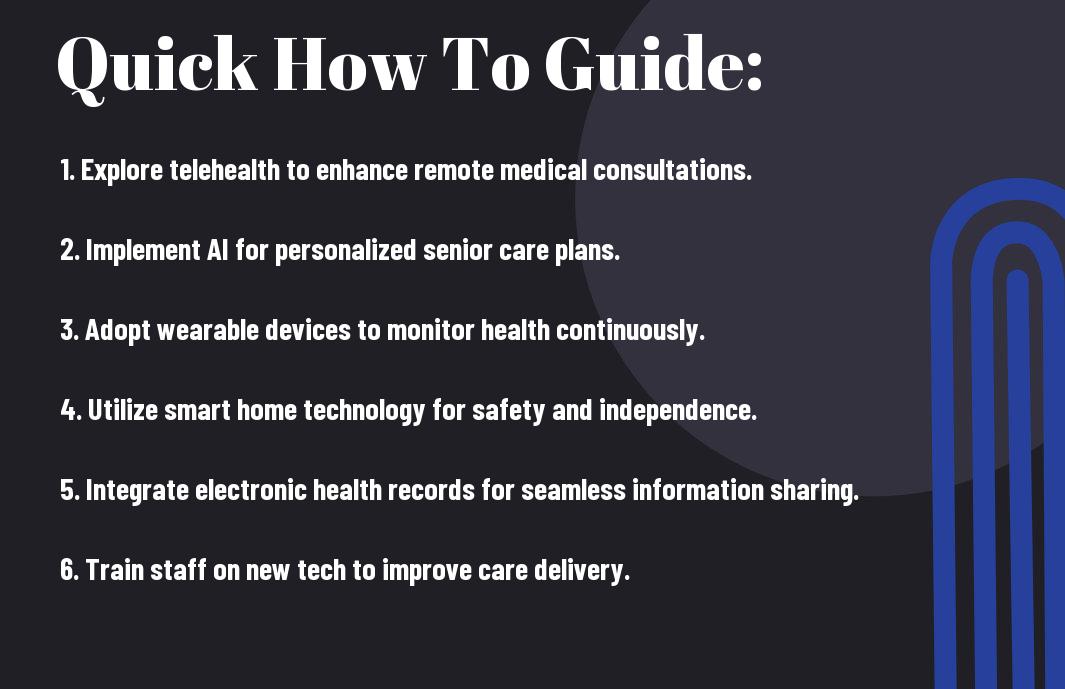
To wrap up
Hence, as a facility owner in the senior care industry, you must stay informed about the technological advancements that are transforming the landscape of care for older adults. Innovations such as telehealth, remote monitoring devices, and social engagement platforms are not just conveniences; they are important tools that can improve the quality of life for residents while optimizing operational efficiencies in your facility. The integration of these technologies can enhance overall resident satisfaction and lead to better health outcomes, which directly impacts your facility’s reputation and operational success.
Additionally, embracing technology in senior care is not merely about adopting the latest gadgets; it involves fostering a culture of innovation within your organization. As you consider these trends, assess how they align with your facility’s mission and goals. By prioritizing the implementation of user-friendly and accessible technologies, you position your facility to not only meet the evolving needs of your residents but also to stay ahead in a competitive market. Leverage this knowledge to take proactive steps in ensuring that your facility remains adaptable and responsive to the changing dynamics of senior care.
FAQ
Q: What are the most significant technology trends currently impacting senior care facilities?
A: Several technology trends are reshaping the landscape of senior care. First, telehealth services are increasingly becoming a staple, allowing seniors to consult with healthcare providers remotely. This not only enhances accessibility but also helps in managing chronic conditions more effectively. Second, the implementation of data analytics systems enables facility owners to better track patient outcomes and operational efficiency, leading to improved care decisions. Additionally, wearable technology, such as health monitoring devices, is also making an impact by allowing real-time health tracking and alerting caregivers about potential health issues.
Q: How can facility owners effectively integrate new technologies into their operations?
A: Integrating new technologies into senior care operations involves several key steps. First, facility owners should conduct a needs assessment to identify which technologies will best meet the needs of their residents and staff. Next, investing in staff training is imperative to ensure that employees are comfortable and proficient in using new technologies. It also helps to pilot new systems on a small scale before a full rollout, allowing for adjustments based on user feedback. Lastly, maintaining a proactive approach to technology updates and being open to continuous improvements can ensure long-term success.
Q: What are some challenges facility owners might face when adopting new technologies in senior care?
A: One of the primary challenges facility owners may encounter is the initial cost of investment in new technologies. Budget constraints can limit the ability to adopt innovative solutions. Additionally, the varying levels of technological familiarity among staff and residents can create a barrier to effective implementation. There might also be concerns regarding data privacy and security, particularly with the use of electronic health records. Finally, ensuring ongoing support and maintenance for the technology can be an obstacle if resources are not allocated properly.


